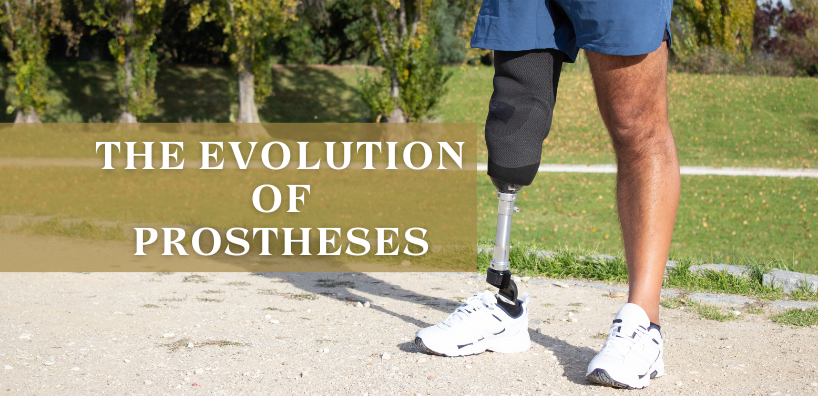Prostheses, remarkable creations designed to replace or augment missing or impaired body parts, have played a pivotal role in improving the lives of countless individuals. Their evolution over time has been nothing short of extraordinary, and the future holds even more promise. This comprehensive exploration delves into the history, present innovations, and future advancements of prostheses, the diverse types available, the technology behind them, and the groundbreaking work of Narayan Seva Sansthan in this field.
Understanding Prostheses
A prosthesis, in its essence, is an Artificial Device designed to replace a missing body part. It serves to restore function, improve mobility, and enhance the quality of life for individuals who have experienced limb loss or congenital limb deficiency. Prostheses can be applied to various parts of the body, including the limbs, hands, arms, feet, and legs.
The Past: A Glimpse into History
Prosthetic limbs have a history that spans centuries, with evidence dating back to ancient Egypt. These early prostheses were basic, often crafted from wood and metal, providing minimal functionality and comfort. Over time, designs improved, but it wasn’t until the mid-20th century that significant advancements were made. The advent of lightweight materials, like plastics and carbon fiber, allowed for more comfortable and functional prostheses.
The Present: Technological Marvels
Modern prostheses are nothing short of technological marvels, driven by key innovations:
- Lower Limb Prostheses: These include below-knee (transtibial) and above-knee (transfemoral) prostheses. They often feature advanced materials, microprocessors, and responsive mechanisms for natural movement, even allowing users to climb stairs and walk on uneven terrain.
- Upper Limb Prostheses: These are tailored to replace arms and hands, providing dexterity through myoelectric technology. These prostheses use electrical signals from the remaining muscles to control movements, enabling more precise and natural actions.
- Bionic Prostheses: Incorporating cutting-edge technology, bionic prostheses replicate human limb function. They can be controlled via neurosignals or through intuitive interfaces, offering wearers a level of control and functionality that was once unimaginable.
- Cosmetic Prostheses: Designed for aesthetics, these prostheses may lack functional elements but provide a natural appearance, which is crucial for boosting confidence and self-esteem.
- Internal Prostheses: Not visible externally, internal prostheses like cochlear implants and artificial hearts enhance sensory and organ functions, saving lives and restoring vital senses.
The Technology Behind Prostheses
Prosthetic technology has seen remarkable developments, primarily in the following areas:
- Materials: Lightweight, durable materials like carbon fiber, titanium, and advanced plastics are used to construct prosthetic limbs. These materials ensure both functionality and comfort.
- Microprocessors: Many modern prostheses, especially lower limb prostheses, incorporate microprocessors. These devices adjust the limb’s response in real-time to provide a more natural gait.
- Myoelectric Control: Myoelectric prostheses use the electrical signals generated by the remaining muscles to control movements. This technology enables fine motor control, allowing users to perform intricate tasks.
- 3D Printing: Customization through 3D printing is revolutionizing prosthesis manufacturing. This technology allows for rapid, cost-effective production and is particularly valuable in resource-limited regions.
The Prosthesis Development Process
The development of a prosthesis involves several key steps:
- Assessment: A thorough assessment of the user’s needs, physical condition, and lifestyle is conducted.
- Design: Prosthetic specialists create a custom design based on the assessment.
- Manufacturing: Using advanced materials and technology, the prosthesis is manufactured.
- Fitting: The prosthesis is then fitted to the user and adjusted for comfort and functionality.
- Training: Users are trained on how to operate and care for their prosthetic limb.
Durability and Maintenance
Prostheses are designed to be durable, but their lifespan can vary depending on factors like usage and maintenance. Regular maintenance and check-ups are essential to ensure the prosthesis remains in good working condition. Proper care can extend the life of a prosthesis, allowing users to enjoy its benefits for many years.
The Future: Promising Innovations
The future of prostheses is filled with exciting innovations that hold great promise:
- Neural Integration: Prostheses are becoming more integrated with the user’s nervous system, allowing for more intuitive control and feedback. This breakthrough technology could enable users to perform complex tasks with ease.
- Biomechanical Advances: Enhanced biomechanical design and materials are making prostheses more comfortable and capable. Advances in socket design and materials like silicone are making prostheses not just functional but also comfortable.
- Sensory Feedback: Researchers are developing prostheses with sensory feedback, enabling users to feel pressure and temperature, which can revolutionize the way they interact with their environment.
- Mind-Controlled Prostheses: Brain-computer interfaces are opening new frontiers in controlling prostheses with thought alone, allowing users to perform incredibly intricate tasks.
Narayan Seva Sansthan’s Impact
Narayan Seva Sansthan, a non-profit organization dedicated to empowering lives, has been at the forefront of providing free prosthetic limbs to those in need. Their mission extends to underprivileged and differently-abled individuals, ensuring they regain mobility, confidence, and independence. With the assistance of advanced technology and a team of dedicated experts, Narayan Seva Sansthan is bridging the accessibility gap for quality prosthetic limbs, making a profound difference in the lives of countless beneficiaries.
Prostheses have come a long way from their rudimentary origins to the cutting-edge devices we see today. With ongoing innovation and the compassionate efforts of organizations like Narayan Seva Sansthan, the future of prostheses holds even more promise, allowing individuals to embrace life with enhanced mobility and confidence and with newfound opportunities to explore their boundless potential.








